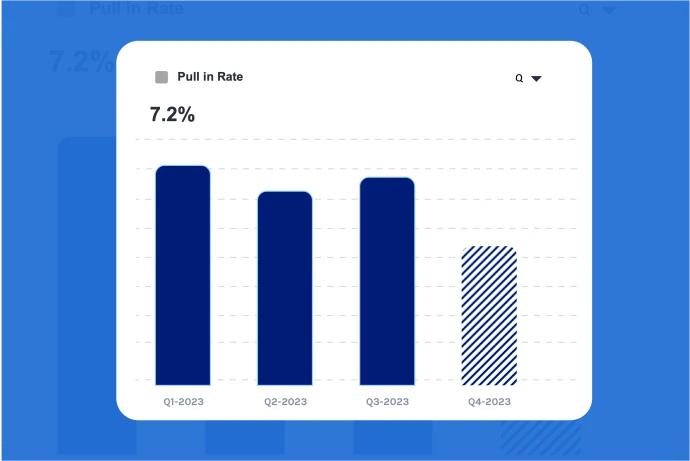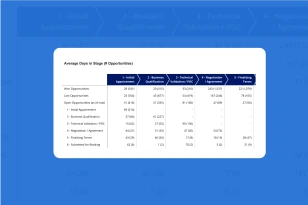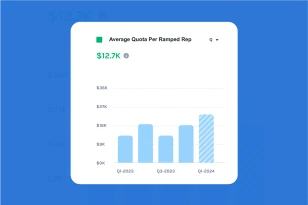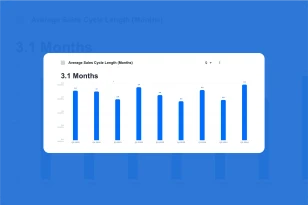What is Pull in Rate?
Pull in Rate measures the effectiveness of pulling deals forward in the sales pipeline, accelerating their movement toward closure. It reflects the ability of the sales team to expedite the closing process and generate revenue sooner than originally anticipated.
Why is it important to monitor Pull in Rate?
The Pull in Rate holds significance for several reasons:
- Revenue Acceleration: The metric directly impacts revenue acceleration by gauging how efficiently deals are moved forward in the pipeline. A high pull-in rate indicates an ability to close deals sooner, positively impacting cash flow.
- Sales Pipeline Efficiency: Monitoring this metric contributes to maintaining a well-managed and efficient sales pipeline. It highlights the team’s agility in responding to opportunities and expediting the sales cycle.
- Competitive Advantage: A higher Pull-in Rate provides a competitive advantage. The ability to close deals faster than competitors can position the company as more responsive and attractive to potential customers.
How do you calculate Pull in Rate?
Pull in Rate Formula
(Number of Deals pulled in and closed won /
Total number of deals closed won in the period) * 100
How do you Improve Pull in Rate?
Improving the Pull in Rate involves strategies to expedite deal closures and optimize the sales process. Here are some approaches to improve this metric:
- Streamlined Sales Process: Review and streamline the sales process to identify opportunities for efficiency. Simplify steps and remove unnecessary obstacles that may slow down deal closures.
- Effective Communication: Ensure open and effective communication between the sales team and other relevant departments, such as marketing and customer support. Timely communication can prevent delays and expedite decision-making.
- Sales Team Training: Provide ongoing training to the sales team to enhance their skills in deal management and negotiation. Equip them with strategies to address customer concerns and objections swiftly.
- Data-Driven Decision-Making: Use data analytics to identify patterns and trends in deal closures. Understand the factors that contribute to deals closing sooner and use this information to refine sales strategies.
- Incentives for Early Closures: Implement incentive programs for the sales team based on early deal closures. Encourage and reward efforts that contribute to pulling in deals ahead of schedule.





